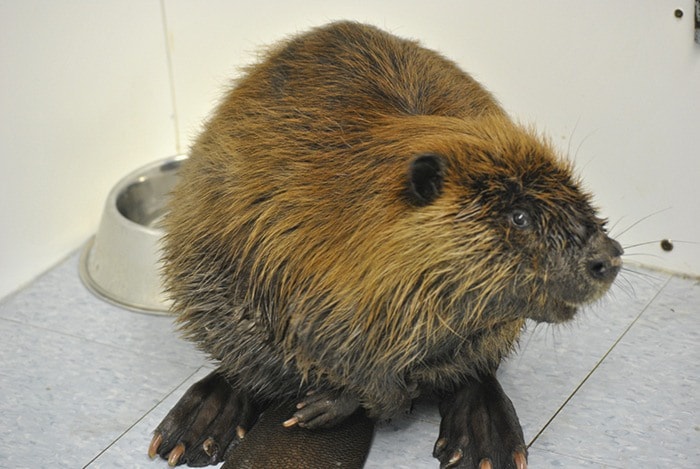"Busy as a beaver" certainly describes these industrious animals that are Canada's national animal emblem.
Next to capybaras, beavers are the largest semi-aquatic rodents in the world. These animals are found across Canada and America with the exception of Florida and parts of southern California.
Hunted and trapped for their luxurious fur, beavers were almost hunted to extinction in the 1700s to meet the demands of the European fashion market. Easily recognizable with their large flat tails and protruding front teeth, their dense brown fur is maintained with waterproofing oil allowing them to spend most of their time submerged under water.
Other adaptations that allow them to dive include loose lips, which can be pulled together making their mouths waterproof, together with transparent eyelids which act as goggles under water.
Beaver's hind feet are clawed and webbed resembling flippers, their front legs have fingers and claws that they use to hold food or strip the bark off wood. The most important and recognizable feature is the beaver tail, this paddle-shaped tail acts as a rudder to steer them through the water whilst swimming but is also used to warn other beavers of danger when slapped on the water.
Average weight for a beaver is approximately 27 kilos; their body length plus head measure between 60 and 100 centimetres. Beavers have been known to live for more than 20 years.
Habitat includes woodlands, wetlands, rivers and lakes. Beavers are one of the only species next to man that can change or alter their environment; they have proven to be masters of construction.
If suitable nest sites are available in river banks or lakes, these resourceful creatures will burrow into the banks to build nests, but usually they will create their own habitat by creating dams. Herbivores by nature, beavers eat bark, twigs, leaves and aquatic plants. Powerful jaws and large, strong teeth allow the beavers to gnaw and fell small trees that they then carry to their construction site in their mouths.
Beaver dams can be over five metres wide and two metres high and are custom designed with a fresh air vent on the top. Trees and other vegetation are intricately woven to create the "lodges" and holes or leaks are plugged with mud, repairs are ongoing.
The only way into the lodge is by underwater entrances that can withstand freezing in the winter. Inside the lodge there are a variety of chambers including nesting, feeding and storage areas.
Beavers are monogamous, mating for life; a mated pair will produce a litter of two to four kits each year that will remain with the parents until their second winter, when they will leave the family lodge to find their own territory and build their own dams and lodge.
Beavers have the ability to drastically alter the course of streams and rivers and will create new lakes and wetland which are beneficial in creating new habitat for a variety of other species.
However, they often venture into urban areas, where they back up creeks, causing homes and gardens to be flooded. As is the case with many wildlife species that have adapted to urban living conflicts between wildlife and humans are a common occurrence.
This year, MARS has rescued two beavers. The latest was found on the beach by the Big Rock in Campbell River, where it appears to have become disoriented after swimming down a creek and possibly ingesting salt water.
The animal was weak, cold and emaciated but showed no other signs of injury or disease. Our wildlife centre does not have the facilities or permits to rehab beavers so the animal was transferred to the Wild Ark wildlife centre in Victoria.
I spoke to the staff at Wild Ark last week and the beaver was making good progress. After being rehydrated with fluids it is now feeding on its own and showing an interest in its pool, swimming and beating its tail on the water. Hopefully it will be released in a stream in the area close to where it was found.
Please do not attempt to rescue a beaver or any other mammal, as they have extremely powerful jaws and teeth and can be extremely unpredictable.
Once again we are asking people who are out in the forest or along beaches to be aware of the wildlife, eagles, herons to mention a few species are building or sitting on nests. Please be aware and leave them alone.
Many migratory sea birds are stopping on our shores to refuel before the final leg of their northern migration, please stay away from feeding birds and do not let dogs chase them.
This Sunday, April 21, is Earth Day and MARS is holding a Walk for Wildlife at Courtenay Airpark from 9 a.m. to 1 p.m. For further details, please visit www.wingtips.org. To report injured or abandoned wildlife please call 1-800-304-9968, for all other information, phone 250-337-2021.
Sandy Fairfield is the educational co-ordinator for the Mountainaire Avian Rescue Society (MARS). The MARS column appears every second Thursday.
